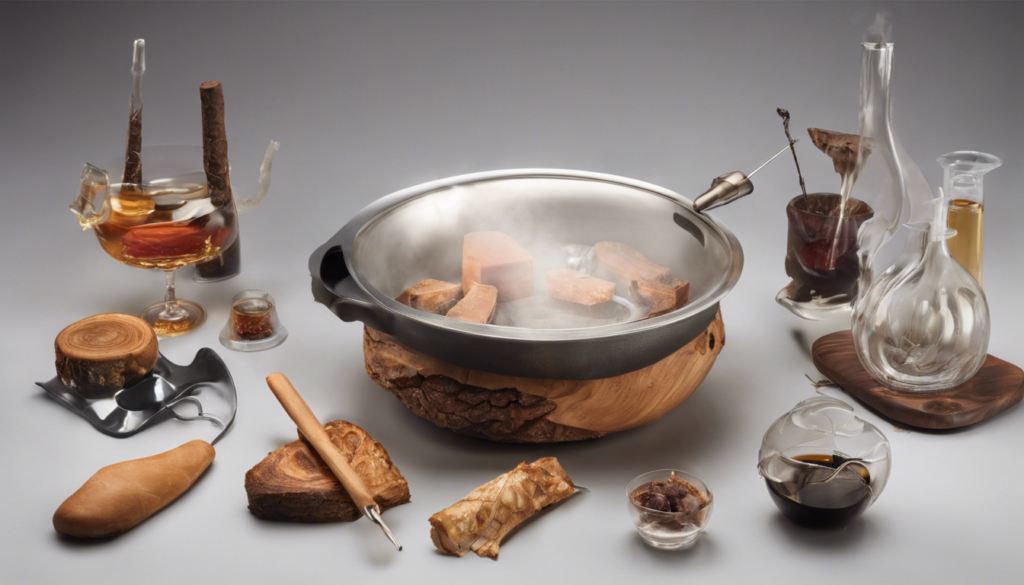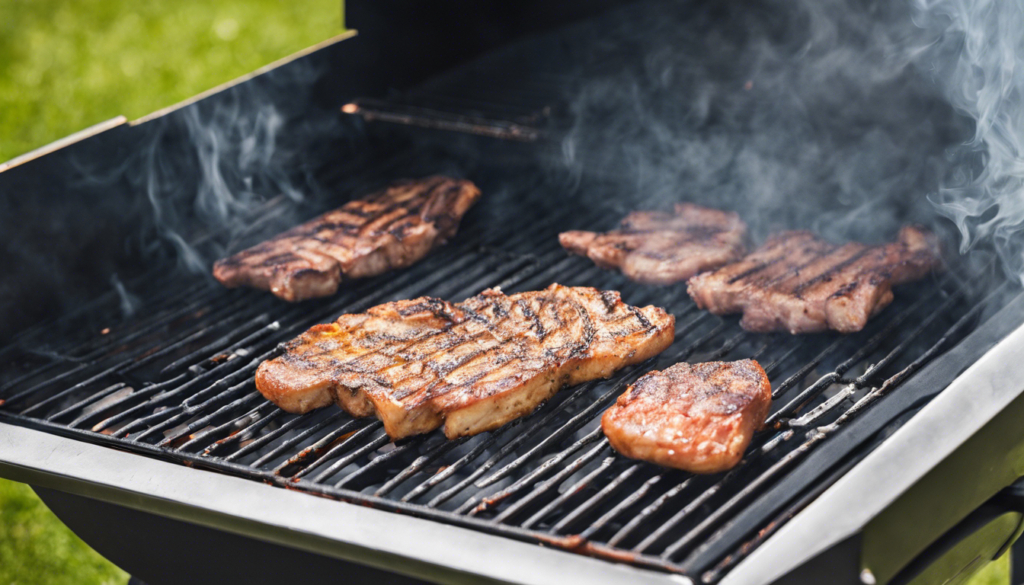Mastering the Culinary Symphony: Temperature and Techniques in Smoking
Have you ever wondered how to transform a simple meal into a smoky, flavorful feast? The answer lies in the art of smoking, a culinary technique that has been used for centuries. This article will guide you through the nuances of temperature control, various smoking techniques, the science behind the flavors, and much more. By mastering these aspects, you can elevate your cooking skills to a whole new level.
Understanding the temperature and techniques in smoking is essential to bring out the best flavors in your food. From choosing the right wood to maintaining the perfect moisture level, each step is a note in this culinary symphony. So, are you ready to conduct your own culinary symphony?
The Art of Smoking: A Brief History
Smoking as a cooking technique dates back to our ancestors. They discovered that food exposed to smoke lasted longer, reducing the risk of spoilage. This was a significant discovery, especially in times when refrigeration was not an option.
Over the centuries, smoking techniques have evolved significantly. From open fire pits to modern electric smokers, each development has brought its own unique flavor profile and cooking style. Today, smoking is not just about preservation; it’s about enhancing flavor, texture, and creating culinary masterpieces.
| Century | Smoking Technique |
|---|---|
| Prehistoric Times | Open fire smoking |
| 19th Century | Introduction of smokehouses |
| 21st Century | Electric and gas smokers |
Understanding the Science of Smoking
At its core, smoking is all about the science of heat and flavor. The temperature plays a crucial role in how the food cooks, how smoke is produced, and how it infuses the food with flavor. The right temperature ensures that the food is cooked evenly and thoroughly.
The science behind smoke and flavor is fascinating. When wood burns, it produces smoke. This smoke contains tiny particles and gases that adhere to the surface of the food, imparting a distinct flavor. Different types of wood produce different flavors, allowing you to experiment and create unique taste profiles.
The Symphony of Flavors: Different Types of Wood for Smoking
Just as a symphony would be incomplete without a variety of instruments, the art of smoking is incomplete without different types of wood. Each type of wood brings a unique flavor to the table, from sweet and fruity to strong and spicy.
For instance, applewood gives a sweet, fruity flavor that’s perfect for poultry and pork. On the other hand, hickory wood imparts a strong, smoky flavor that’s ideal for red meat. By experimenting with different types of wood, you can create a symphony of flavors that will tantalize your taste buds.
Remember, the type of wood you choose can make or break your smoked dish. So, choose wisely!
Mastering Temperature Control in Smoking
Temperature control is one of the most critical aspects of smoking. It’s not just about setting the right temperature; it’s about maintaining it consistently throughout the cooking process. This ensures even cooking and optimal flavor infusion.
There are several techniques for maintaining a consistent temperature. For instance, you can use a water pan to stabilize the temperature in the smoker. The water absorbs and retains heat, helping to moderate temperature fluctuations. Additionally, adjusting the vents on your smoker can help control the heat level.
Low and Slow: The Key to Perfect Smoking
When it comes to smoking, the ‘low and slow’ technique is often considered the key to perfection. This involves cooking at a low temperature over a long period. The result? Meat that’s tender, flavorful, and infused with a smoky aroma.
Slow cooking at low temperatures allows the smoke to penetrate the meat deeply, enhancing its flavor. It also breaks down the connective tissue in the meat, making it incredibly tender. So, if you’re after a melt-in-your-mouth smoked brisket or ribs, the ‘low and slow’ technique is your best bet.
Hot and Fast: An Alternative Smoking Technique
While ‘low and slow’ is the traditional method of smoking, ‘hot and fast’ is a viable alternative, especially when you’re short on time. This technique involves cooking at higher temperatures for a shorter period.
Although it doesn’t provide as deep a smoke flavor as the ‘low and slow’ method, it still delivers a tasty result. It’s ideal for foods that don’t require a long cooking time, like poultry and fish.
The Role of Moisture in Smoking
Moisture plays a vital role in smoking. It helps to regulate the smoker’s temperature and prevents the food from drying out. A dry environment can lead to tough, overcooked meat, while a moist environment ensures tender, juicy results.
There are several techniques for maintaining moisture during smoking. One common method is to place a water pan inside the smoker. The water evaporates during cooking, creating a humid environment. Another method is to baste the meat periodically, keeping it moist and adding extra flavor.
The Impact of Seasoning on Smoking
Seasoning is another crucial element in smoking. It enhances the natural flavors of the food and complements the smoky aroma. Whether you prefer a simple salt and pepper rub or a complex blend of spices, the right seasoning can elevate your smoked dish from good to great.
When seasoning meat for smoking, it’s best to apply the rub at least an hour before cooking. This allows the flavors to penetrate the meat. However, be careful not to over-season, as this can overpower the smoke flavor.
Safety Measures in Smoking
While smoking is an enjoyable culinary technique, it’s also important to consider safety. This involves precautions like maintaining a safe distance from the smoker, using heat-resistant gloves, and ensuring the smoker is on a stable, heat-proof surface.
Food safety is equally important. This includes using a food thermometer to ensure the meat is cooked to the correct temperature, and refrigerating leftovers promptly to prevent bacterial growth.
Tools of the Trade: Essential Equipment for Smoking
Like any culinary technique, smoking requires the right equipment. This includes a smoker, wood chips or chunks, a food thermometer, tongs, and a basting brush. Each tool plays a crucial role in the smoking process and contributes to the final result.
Using these tools effectively can enhance your smoking experience. For instance, a food thermometer ensures your meat is cooked to perfection, while tongs assist in safely turning and serving the meat.
Case Study: Master Chefs and their Smoking Techniques
Many master chefs have embraced the art of smoking, each bringing their unique twist to the technique. For instance, Chef Aaron Franklin, owner of Franklin Barbecue in Austin, Texas, is renowned for his ‘low and slow’ smoked brisket. His secret? A simple rub, consistent temperature, and plenty of patience.
On the other hand, Chef Tuffy Stone, a world champion pitmaster, prefers the ‘hot and fast’ method for his award-winning ribs. He believes in the importance of balancing heat, smoke, and moisture to achieve the perfect result.
Common Mistakes in Smoking and How to Avoid Them
As with any cooking technique, mistakes can happen in smoking. Common issues include fluctuating temperatures, over-smoking, and under-cooking. However, with knowledge and practice, these can be easily avoided.
For instance, to avoid temperature fluctuations, make sure to preheat your smoker before adding the food. To prevent over-smoking, be mindful of the amount of wood you use. Remember, when it comes to smoking, less is often more.
Conclusion: The Culinary Symphony of Smoking
Mastering temperature and techniques in smoking is like conducting a culinary symphony. Each element, from the choice of wood to the seasoning, contributes to the final flavor profile. By understanding and controlling these elements, you can create smoky, flavorful dishes that are sure to impress.
So, why not give it a try? With a little practice, you could be conducting your own culinary symphony in no time. Happy smoking!
References and Further Reading
For further insight into the art of smoking, consider the following resources:


